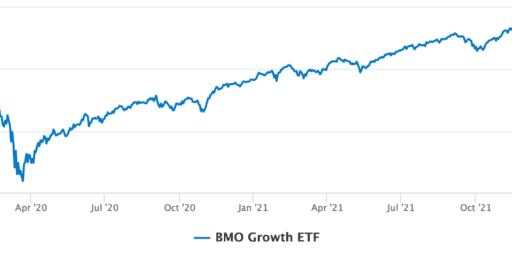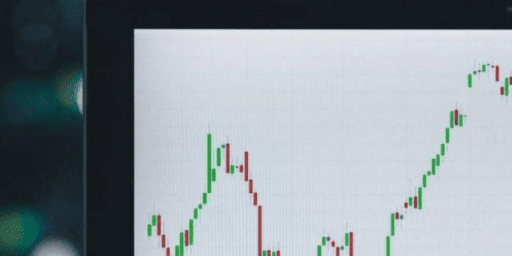Top 6 Indexing Options for Your Portfolio in 2025
If you’ve started your research on investing, but still aren’t quite sure how or where to get started, you are not alone. Plenty of almost-investors get stuck at the starting line for reasons like not feeling educated enough, feeling like they don’t have enough money to start investing, or simply feeling unclear on which type of investment to choose.
When it comes to investing, the best time to start is now, and index investing is the perfect way to begin. It’s simple, easy to manage, low-cost, and great for any type of investor.
If you’re looking for an index investing guide, look no further. We’ll be explaining what it is, why we love it, some things to look out for, and how to start index investing.

Are You Saving Enough for Retirement?
Answer your retirement savings questions with 4 Steps to a Worry-Free Retirement. The first online course for Canadian retirement.
Instant Access: Today!
What is Index Investing?
Index investing is one of the easiest ways to invest in your future, and one that allows you to invest in hundreds of high-performing companies at once. An index fund is a mutual fund or exchange-traded fund (ETF) that aims to track or mimic the performance of a financial market index such as the S&P 500.
With index investing, you won’t have to worry about paying someone else to manage your portfolio, or worry about choosing the wrong stocks or bonds. The index fund you choose will have the same holdings as the stock market index it tracks.
There are three main types of index investing: mutual fund index investing, ETF investing by subclass or asset class, and asset class allocation ETFs, also known as all-in-one ETFs, which basically allocate the funds for you within a selected set of ETFs based on your investment goals and timeline.
All-in-one ETFs have gained in popularity over the years because of their diversification, low fees and automatic rebalancing.
How much can investing in an index fund pay off, and what are the best options for index investing? Well, let’s look at VFV, which is designed to track the performance of the Vanguard S&P 500 Index ETF – one of the best Canadian ETFs for U.S equity. The current 5 year return of this particular index fund is a whopping 66.83% while the expense ratio sits at an incredibly low 0.08%.
We’ll get to more detail on more of our top picks later, but for now, it’s time to look at the pros and cons of index investing.
Index Investing Pros and Cons
Now that you know a bit about what an index fund is, let’s have a look at some of the advantages and disadvantages of index investing.
Advantages of Index Investing:
- Index investing is an excellent way to invest passively while still making good returns
- Index funds are extremely cost-efficient
- Provides investors with great diversification
- It’s easy to get started and maintain an index fund portfolio
- You don’t need to spend a lot of time researching stocks and bonds, as the choices are already made for you
- A wide range of index funds are available for everything from those that are tech focused to socially responsible
Disadvantages of Index Investing:
- Not flexible as investors don’t get to choose individual stocks represented in the fund
- Doesn’t offer a lot of protection if the market tanks
- Generally an index fund won’t beat the market (although there have been exceptions!)
There are quite a few reasons why index funds are a great investment choice, including the fact that they are low cost and offer great diversification, giving you great returns over time. Even the mighty Warren Buffet believes in index investing, so much so that he wagered, and won, $1 million dollars on a bet that an S&P 500 ETF would outperform an actively managed hedge fund over the span of 10 years.
How to Start Index Investing
So, are you ready to learn how to start index investing? Let’s move on to the next step, setting up your account and choosing your funds!
The first thing to do is choose your investment platform and set up your account if you don’t already have one. Once you’ve finished reading this article, you can head over to our comparison of best Canadian online brokers, as well as learn more about one of our top rated brokerages in our Qtrade review.
Next, it’s time to choose your index investment strategy. There are quite a few to choose from, so we’ll break them down for you in this next section so you can decide which one is right for you.
1. Do-it-Yourself (DIY) with ETFs
If you’re brand new to investing and not sure about ETFs, then this may not be the best option. However, if you are interested in DIY investing, this will likely be the lowest cost option and keeping MER low will make a big difference over the long term.
DIY index investing involves opening up a discount brokerage and buying and selling index ETFs which trade like stocks. To keep costs to an absolute minimum, the ideal scenario is to use a discount brokerage that waives the trading free on ETFs.
Once you choose a brokerage, the next step is to choose the ETFs that represent: Canada; US; International; and, Bonds. If you want to keep it super simple, you can create an indexed global portfolio with only three ETFs:
- Canada: XIC (MER: 0.07%);
- U.S and International: XAW (MER: 0.22%);
- Bonds: VAB (MER: 0:13%);
As you can see, the portfolio MER would be pretty low averaging between 0.14 to 0.30% depending on your weightings and the amount of XAW you are holding in your RRSP (withholding taxes). If you want more portfolio ideas, you can see more low-cost ETF portfolios here.
Asset allocation is another element that you’ll need to think about – in other words, the percentage of bonds and equities in your portfolio. Essentially, you’ll want to increase your bond allocation as you get closer to retirement. Bonds will reduce the big swings in portfolio value from year to year (volatility), but will slightly reduce your portfolio return over the long term.
After you’ve set-up your portfolio, you’ll need to periodically adjust your holdings so that it maintains your asset allocation – this is called rebalancing your portfolio. So if you want to have 25% in each of Canada/US/International/Bonds, at the end of the year, the ratio will likely be a bit off. For me, I like to rebalance when I add new money to the account.
All-in-One Portfolio ETFs
To make it even more simple with ETFs, Vanguard/iShares/BMO have introduced all-in-one ETFs that will eliminate the need to rebalance your portfolio. In a single ETF with a relatively low MER, you can have a globally diversified indexed portfolio. You simply need to pick the ETF that suits risk tolerance (bond %). More details on all-in-one ETFs here.
Discover the best free ETF brokers in Canada
View our detailed Canadian broker analysis
2. TD e-Series
If you aren’t so confident with buying and selling ETFs and more comfortable with mutual funds, then TD E-series offers the lowest cost index mutual funds out there. They also have no trading cost to buy or to sell so it’s ideal for a smaller portfolio. I use these mutual funds exclusively for my children’s education fund. However, at the time, discount brokerages didn’t offer commission-free trading with ETFs. If I were starting over today, I would have likely gone the ETF route.
As mentioned above, to create a globally diversified portfolio, you’ll need four elements with the TD E-series equivalent below:
- Canada: TD Canadian Index Fund-e (MER: 0.33%)
- U.S: TD U.S. Index Fund-e (MER: 0.35%)
- International: TD International Index Fund-e (MER: 0.51%)
- Bonds: TD Canadian Bond Index Fund- e (MER: 0.50%)
Assuming that you have a 25% weighting for each fund would result in a portfolio MER of 0.42%. The only thing is that you can only access these funds through a TD Mutual Funds account that you need to open in a branch. Here was my experience on opening a TD e-series account. Like the DIY option above, this portfolio will need to be manually rebalanced on a regular basis. We rebalance on an annual basis when we make the RESP contribution ($5k between two kids), then again when the government provides match funding ($1k).
Discover the best free ETF brokers in Canada
View our detailed Canadian broker analysis
3. Robo-Advisor
The option of using a Robo-advisor is gaining traction for investors that want to be totally hands off. Essentially, the Robo-advisor will determine your risk tolerance via questionnaire and set your index bond/equity allocation accordingly.
While a DIY portfolio may cost you between 0.14-0.3%/year in fees, expect a Robo-advisor to add at least another 0.4% onto that. A big benefit of the Robo-advisor is that it will automatically rebalance for you on a regular basis and some will even give you financial planning advice.
Here is a full comparison of Robo-advisors from the Globe.
4. Tangerine
For a 1.07% fee, Tangerine offers indexed balanced funds that are a really simple solution for investors. Essentially, you buy one of their balanced funds that are differentiated by the ratio of equities/bonds. Here is a summary:
- Tangerine Balanced Portfolio: 60% equities (20% Canada; 20% US; 20% International) and 40% Canadian bonds.
- Tangerine Balanced Growth Portfolio: 75% equities (25% Canada; 25% US; 25% Internationaal) and 25% Canadian bonds.
- Tangerine Equity Growth Portfolio: 100% equities (33.3% Canada; 33.3 US; 33.3 International)
As with any balanced fund, there is no need to manually rebalance as the fund will take care of that for you. I like the simplicity of this solution, although it costs a little more than a low-cost Robo-advisor.
5. Big Bank Index Mutual Funds
If you are dead set on staying with your bank, then the best way to index is through their in-house index funds. They all have them despite what your mutual fund representative may recommend. Similar to the way that I have our RESP set up with TD, you can do the same with any of the big banks.
What’s the catch? You may end up paying a bit more (should be close to 1%), and you may need to have meetings with your advisor when it comes time to rebalance. I have each of the big banks and their index offerings broken out here.
6. Your Defined Contribution Pension
Many of you work for an employer that offers RRSP matching with a selection of available funds. The selection can be overwhelming, but the secret is to choose funds with the word “index” in the title.
You can choose similar “index” funds from US, International and Bonds to keep your fees low and performance higher than other more expensive actively managed funds.

Are You Saving Enough for Retirement?
Answer your retirement savings questions with 4 Steps to a Worry-Free Retirement. The first online course for Canadian retirement.
Instant Access: Today!
Index Mutual Funds vs. Index ETFs
One of the last things to consider before starting on your index investing journey is whether to choose an index mutual fund or an index ETF. They are similar in many ways, namely that they track particular indices, are low-cost and easy to manage.
An index mutual fund is best for the investor that wants everything to be automated and easy. This can mean everything from scheduling automatic purchases to trades being made only when the makeup of the fund has changed, and that is done by the index provider, so you won’t have to worry about anything until it’s time to rebalance your portfolio.
Some index mutual funds have purchase minimums, holding requirements and slightly higher expense ratios than index ETFs. That being said, now that we have easy access to low-cost robo advisors, there is no real benefit of choosing an index mutual fund. Robo advisors make it easy and save you money, so it’s a win-win.
For investors who want to cut fees to the bone, and are willing to do a bit of extra work on their own without the help of a robo advisor to do so, an index ETF would be a good choice.
Index ETFs are closely related to index mutual funds in that you’ll have wide exposure across markets, but with an index ETF you have more control over the process. Investors can purchase and sell during the open market as well as short sell.
For more on index funds and index ETFs in Canada, check out our other articles, Vanguard Canada index ETFs and mutual funds, Easy index mutual funds with big banks and the best ETFs in Canada.
Index Investing in Canada – FAQ
Final Thoughts
Index investing has come a long way since it was first introduced by John Bogle in 1976, and its rise in popularity over the last decade has made it a more dynamic and exciting investment option for people of all ages and stages of their investment journey.
For its incredibly low cost, diversification opportunities, ease of use, and earning potential, we highly recommend index investing as part of your portfolio.
DIY with index ETFs is likely the best option for ultra-low-cost investing, but also requires the investor to open a discount brokerage account and buy/sell ETF positions when rebalancing (except when going with an all-in-one ETF).
If you are the type of investor who wants convenience over all else, then I would recommend an all-in-one ETF, or a Robo-advisor such as Wealthsimple for example. Those solutions work just fine with an automatic payment into the fund/account and the occasional review of your account.
I've Completed My Million Dollar Journey. Let Me Guide You Through Yours!
Sign up below to get a copy of our free eBook: Can I Retire Yet?











GREAT INFO !
Great information thank you. I have decided on a robo legacy account for my kids and Gkids within the next few months. Has anyone done a return comparison between the ETFs of Wealthsimple and Nest Wealth over the last couple of years? Any other information on these would be welcome besides just their costs.
Cheers
Doc
Hi MIchael, yes we have a number of Vanguard options in Canada. For US exposure, VTI (in USD) is popular and super cheap.
Curious – most of the American FIRE sites mention Vanguard S&P 500 … do you have the Vanguard option in Canada? … and what would be the cost numbers if so? Michael CPO
Great read. It’s amazing the advancements we are making. I remember when discount brokers like Questrade were new kids on the block and I didn’t think it could get any better with those commission prices. Now we have ETFs saving people from over priced MERs and Robo Advisors making the decisions for you with a simple questionare. What a great time to be alive!
Wow good post aNd thanks for the heads up of what etfs you recommend. Personally I like doing it myself but see the potential of the robo advisors.
Wow those MERs are quite high in your DCPP! Did anyone ever ask the company to change the fund offerings?
I did ask my company. No way! They don’t even understand why I’m asking. They don’t have an incentive either I believe. Most employees don’t understand any of this either and so the only way to free my money would be to quit so I can just move the money to my broker.
My company plan has some of those same mutual funds but the MERs are substantially higher. The Canadian index fund in my plan has an MER of 1.3% and the rest are even worse. Manulife is taking unfair advantage of me.
Could you please explain a little bit about how to erebalancing td e series account? Thank you! I really appreciate if you can provide an explam with calculations
For specific calculations for your particular situation, Moneysense created a nifty spreadsheet that will help you with rebalancing your portfolio.
http://www.moneysense.ca/invest/portfolio-rebalancing-tool/